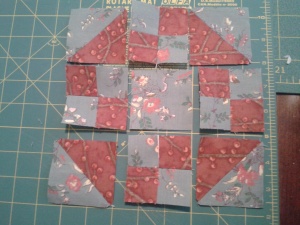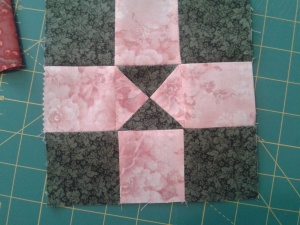My parents have a corner lot with a split rail fence around the yard. Years ago, mom planted trailing roses at each fence post, and worked hard to train the roses to follow the rails, with mixed results. Most of them cooperated, some of them never really have. On May 2, 2004, I got engaged. After a few days of consulting calendars, Jim and I realized if we wanted to get married that year, it had to be before the month ended! We tossed out a few dates to the family and settled on the 28th. A few more discussions and I convinced him to have the ceremony in my parents’ yard. I knew all those roses would be in bloom and it would be perfect! I know 26 days is not very long to plan any sort of major event, much less a wedding, but everything fell into place. Everything! My dad had concerns that the roses would have bloomed and done before then, but they held off and held off and held off until about 2 days before the wedding, when they suddenly started to burst out all over. The timing was impeccable. The day before, I was at the house, and thanked them both for all their hard work to make the yard look so outstanding. It really was gorgeous. The day of the wedding dawned bright and clear. By noon, there were clouds on the horizon. By 3, dad was glued to weather.com watching a tremendously huge storm cell form right over Provo, Utah, with the rain expected at 6, just as the ceremony was about to start. We hastily pulled together Plan B, which was to use the large pavilion at the nearby park. A poster was made and strategically placed, everything needed for the ceremony was moved, phone calls were made to key players (his parents, immediate family, the clergy). And my mother did something I’ll never forget. She grabbed a couple of plastic grocery bags, walked the perimeter of the yard, and harvested petals from her trailing roses for the flower girl and flower boy (Jim’s 3 year old nephew called 10 days before the wedding and asked if he could be the flower boy) to scatter down the makeshift aisle at the pavilion. I can never think about my wedding day without remembering all those rosebuds that waited until the perfect moment to burst into bloom.
I had to look at this block a looooooong time until I could see the rosebud. Then I had to lay it all out before I could see the separate components that made it up, and realized it’s a modified pinwheel.
 Being a pinwheel, I really wanted to start in the middle and work my way out. It soon became apparent, however, that first I would need to sew the 8 HST units needed to make the tips of the rosebuds. Using two contrasting fabrics, I sewed long sides together and pressed the seams open. Next, I sewed them together in pairs, side by side, with the leaf part of the bud to the left side. Finally, I attached a background triangle to the left end of the rectangle.
Being a pinwheel, I really wanted to start in the middle and work my way out. It soon became apparent, however, that first I would need to sew the 8 HST units needed to make the tips of the rosebuds. Using two contrasting fabrics, I sewed long sides together and pressed the seams open. Next, I sewed them together in pairs, side by side, with the leaf part of the bud to the left side. Finally, I attached a background triangle to the left end of the rectangle.
 I had decided to be “artistic” and use a lighter shade of green for the tips of the rosebud. Wish I hadn’t, because they kind of fade into the background fabric. I sewed the tip sections to side of each of the dark green triangles in order to make the 4 rosebuds. This effectively created 1/2 of a HST unit. The other half is made of background fabric.
I had decided to be “artistic” and use a lighter shade of green for the tips of the rosebud. Wish I hadn’t, because they kind of fade into the background fabric. I sewed the tip sections to side of each of the dark green triangles in order to make the 4 rosebuds. This effectively created 1/2 of a HST unit. The other half is made of background fabric.
It just took a couple of minutes to sew together the large HST units and to press the seams. This yielded the four corner sections of the block, and the basis for our pinwheel.
 I sewed the top two pieces together and pressed the seam one direction, then sewed the other two pieces together and made sure the seam pressed the opposite direction. When I laid the two halves together with right sides facing, the center seam nested beautifully together and it was quick work to sew the two halves together before giving the finished block a really good pressing.
I sewed the top two pieces together and pressed the seam one direction, then sewed the other two pieces together and made sure the seam pressed the opposite direction. When I laid the two halves together with right sides facing, the center seam nested beautifully together and it was quick work to sew the two halves together before giving the finished block a really good pressing.
I really do like this block. But the more I look at it, the more I realize I need to make it again, and make sure the colors don’t merge with the background. Good thing I need extra blocks for my king-sized quilt!





























